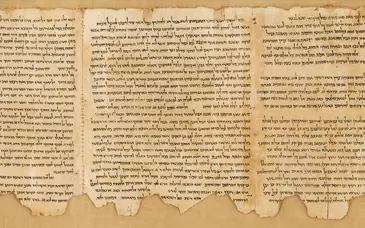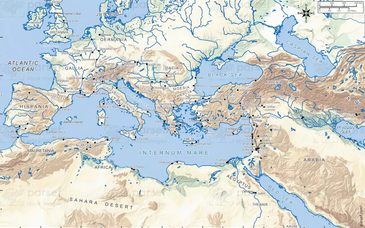In the rugged and war-torn landscape of ancient Canaan, few cities were as prominent and powerful as Hazor. Frequently mentioned in both archaeological records and biblical accounts, Hazor played a central role in the geopolitical dynamics of the Late Bronze Age and the early Iron Age. Its dramatic fall, as recorded in the Book of Judges, marks a significant turning point in Israel’s conquest and settlement of the Promised Land.
Hazor’s Strategic Importance
Hazor was more than just a fortified city; it was a major Canaanite metropolis, often described as “the head of all those kingdoms” (Joshua 11:10). Strategically situated in the northern region of ancient Israel, Hazor commanded critical trade routes connecting Egypt, Mesopotamia, and the Mediterranean. Its wealth, size, and influence made it a powerful regional hub and a formidable opponent for any would-be conquerors.
The city's location can be visualized in this detailed Hazor Bible map, which illustrates the topography and strategic roads that contributed to its significance in the ancient Near East.
Hazor in the Book of Judges
After the initial conquest of Canaan under Joshua, the Israelites entered a tumultuous period known as the time of the Judges. This era was characterized by a cyclical pattern of apostasy, oppression, repentance, and deliverance. During this period, Hazor once again rose to prominence, this time as the capital of King Jabin’s oppressive regime.
According to Judges 4, Jabin, king of Hazor, reigned with the aid of Sisera, the commander of his army, who harshly oppressed the Israelites for twenty years. The iron chariots of Sisera symbolized Canaanite technological superiority and served as an intimidating reminder of Israel’s vulnerability. It was during this period that the prophetess Deborah and the warrior Barak arose to lead Israel in a decisive rebellion.
The resulting battle, fought near Mount Tabor and the Kishon River, is one of the most dramatic episodes in the Book of Judges. Despite Sisera’s advanced weaponry, the Israelites routed the Canaanite army. Sisera fled the battlefield, only to meet his end at the hands of Jael, a Kenite woman, who famously killed him with a tent peg—a vivid image of divine justice and unexpected deliverance.
This victory over Hazor and its allies marked a major shift in the power dynamics of the region. The Canaanite coalition was shattered, and Israelite tribes gained breathing room to expand and consolidate their holdings. For those studying the period, a map of Israel during Judges offers crucial context to understand the tribal divisions and battle movements.
Archaeological Corroboration
Modern excavations at Tel Hazor have unearthed impressive evidence of a large and complex urban center. The city’s destruction layers, particularly those dated to the 13th and 12th centuries BCE, align with the biblical timeline of Hazor’s downfall. Burnt palatial structures and sudden cultural shifts support the narrative of a violent conquest.
While scholars continue to debate the specifics, the archaeological consensus affirms Hazor’s prominence and its eventual destruction, making it a key site for understanding the transition from Canaanite city-states to Israelite tribal settlements.
For a closer look at the city’s layout and its surroundings, the Hazor map provides a visual guide that enhances our understanding of this pivotal location.
The story of Hazor encapsulates the themes of resilience, faith, and divine intervention that permeate the Book of Judges. It serves as a powerful reminder of the historical and spiritual struggles that defined Israel’s early years in the Promised Land. As both a historical site and a theological symbol, Hazor continues to inspire scholars, archaeologists, and readers of Scripture alike.



